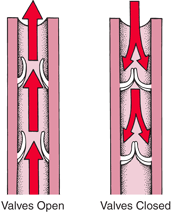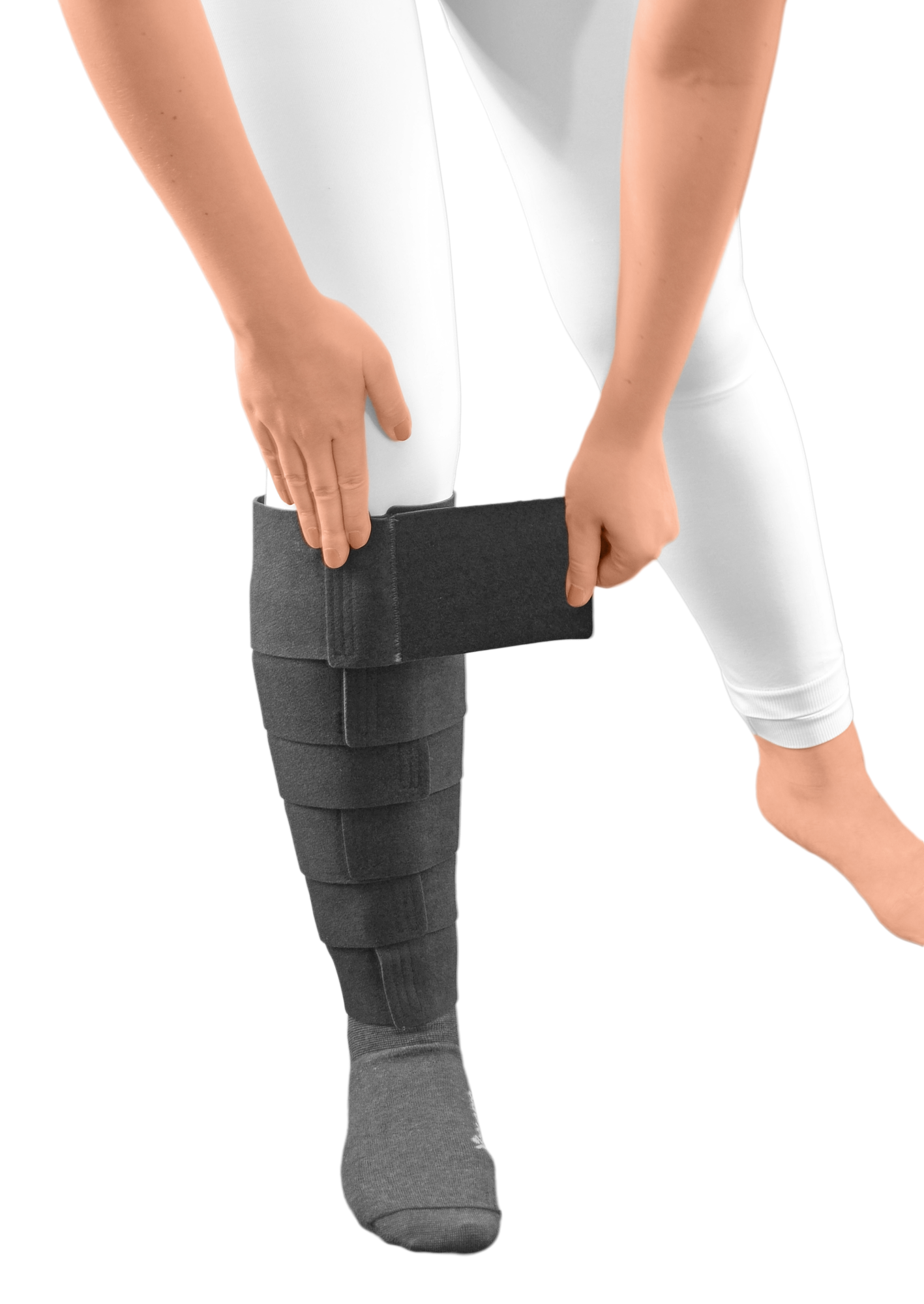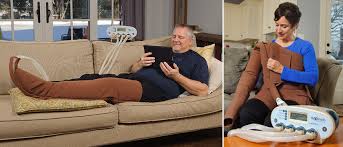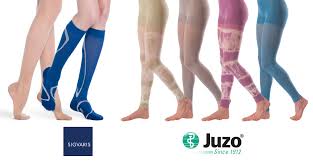Effect of Compression Therapy;
The increased tissue pressure provided by external compression described above has several effects:
- Reduces the amount of fluid leaving the blood capillaries into the tissues and increases the return of tissue fluids back into the blood and lymph cappilaries, thus reducing the amount of fluid in the tissues.
- Increases venous and lymphatic return by improving the function of the valves in these vessels.
- Increases the effect of muscle and joint pump activity to propel these fluids back to the heart and ensures uninterrupted circulation.
- Provides a counter force to the working musculature, known as working pressure, thus improving its efficiency.
These effects help to prevent re-accumulation of fluids which were evacuated during CDT treatments and conserve the results achieved during Manual Lymphatic Drainage (MLD).
Compression therapy then serves to maintain the reduction of edema and to prevent the re-accumulation of lymph fluid.

Types of Compression Therapy;
Current Compression Therapies may be divided into four categories, ranging from short-stretch bandaging or wraps, to Intermittant Pneumatic Compression Pumps. Within each category are numerous variants, manufacturers and options.
Your therapist will recommend the type of compression therapy and specifications according to your particular needs and treatment plan.
We are certified fitters of custom, semi-custom and off-the-shelf compression garments, and certified trainers of Intermittant Pneumatic Compression Pump systems.
Your therapist will also be able to assist with your health insurance plan in obtaining prior-authorization when required, and estimating what if any out of pocket cost for which you may be responsible.
The Role of Compression Therapy in Managing Lymphedema;
Lymphedema is a condition that affects the lymphatic vessels, which are responsible for transporting protein-rich lymph fluid back into the circulatory system.
When lymph vessels are unable to transport this fluid properly, a build-up occurs, resulting in swelling and the thickening of the skin. Although there is no cure, compression therapy is one of the most important aspects of managing lymphedema.
Compression garments are designed to keep a continuous pressure on the swollen/affected area to assist the drainage of fluid and minimize swelling.
Reasons for Compression Therapy;
The elastic fibers in the tissues affected by lymphedema are weakend and damaged. These fibers lose their elasticity and tend to harden, especially in cases where lymphedema has been present and untreated over a long period of time.
Although the swelling in lymphedema may be reduced to a normal or near normal size during treatments, the damage to the lymphatic system, which caused the onset of lymphedema, is permanent and the skin elasticity in the tissues affected by lymphedema may never be regained to prior levels.
Where the elastic tissue fibers have been damaged and thus unable to provide sufficient resistance to the build-up of fluid, the application of external compression increases tissue pressure and provides the necessary support for those tissues that lost elasticity.






Compression Garments
"One Stop Shop"
- Therapy and Garments all at one location.
- All brands of both "Ready-to-Wear" and "Custom" Garments.
- Certified compression garment fitters.
- We order your garments and bill your health insurance plan, if covered, for your convenience.
- We Accept all health insurance plans.
- We provide a reminder and auto-reorder program for you in accordance with your insurance coverage
- We Provide all brands to meet your particular needs
To get started, please contact.



